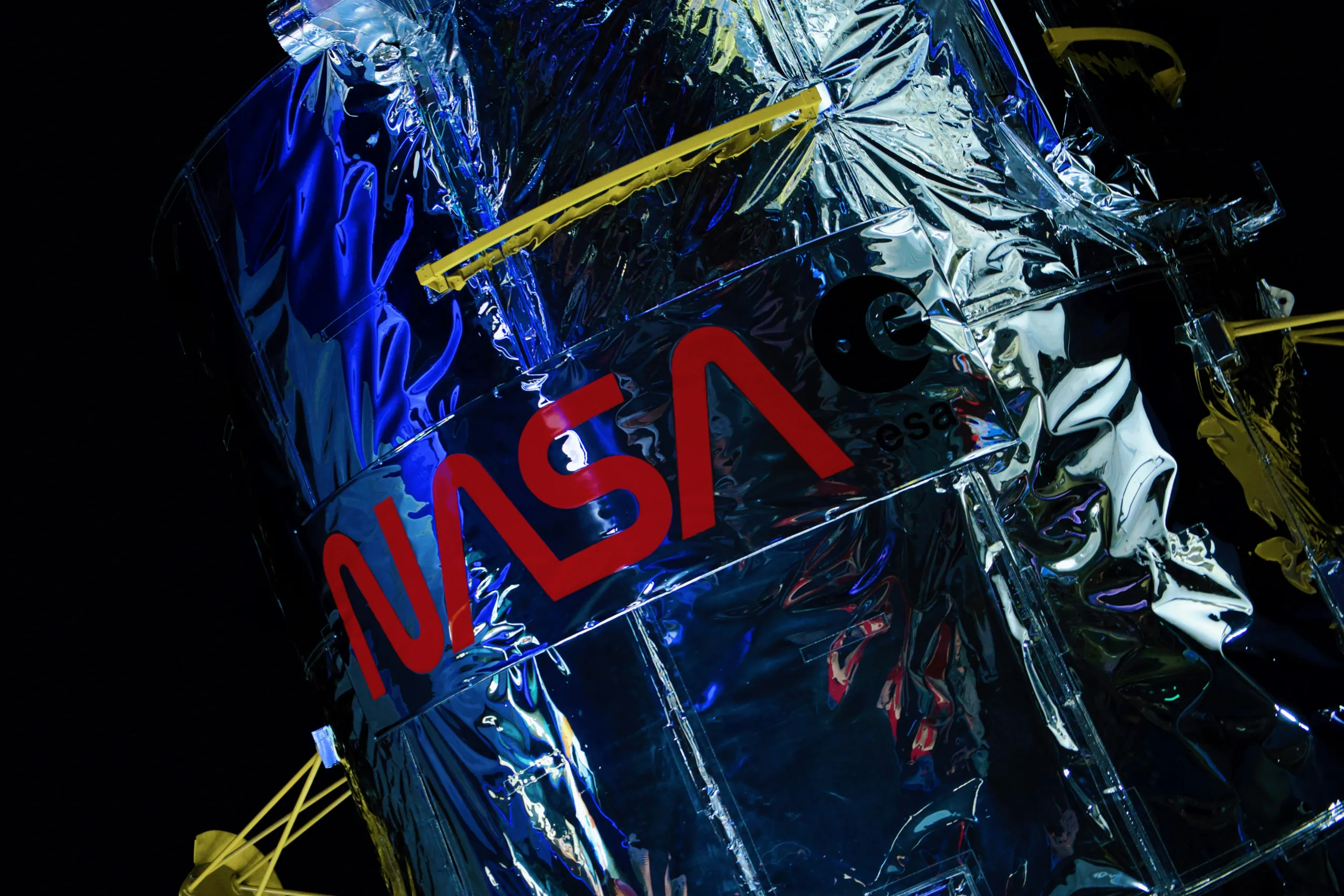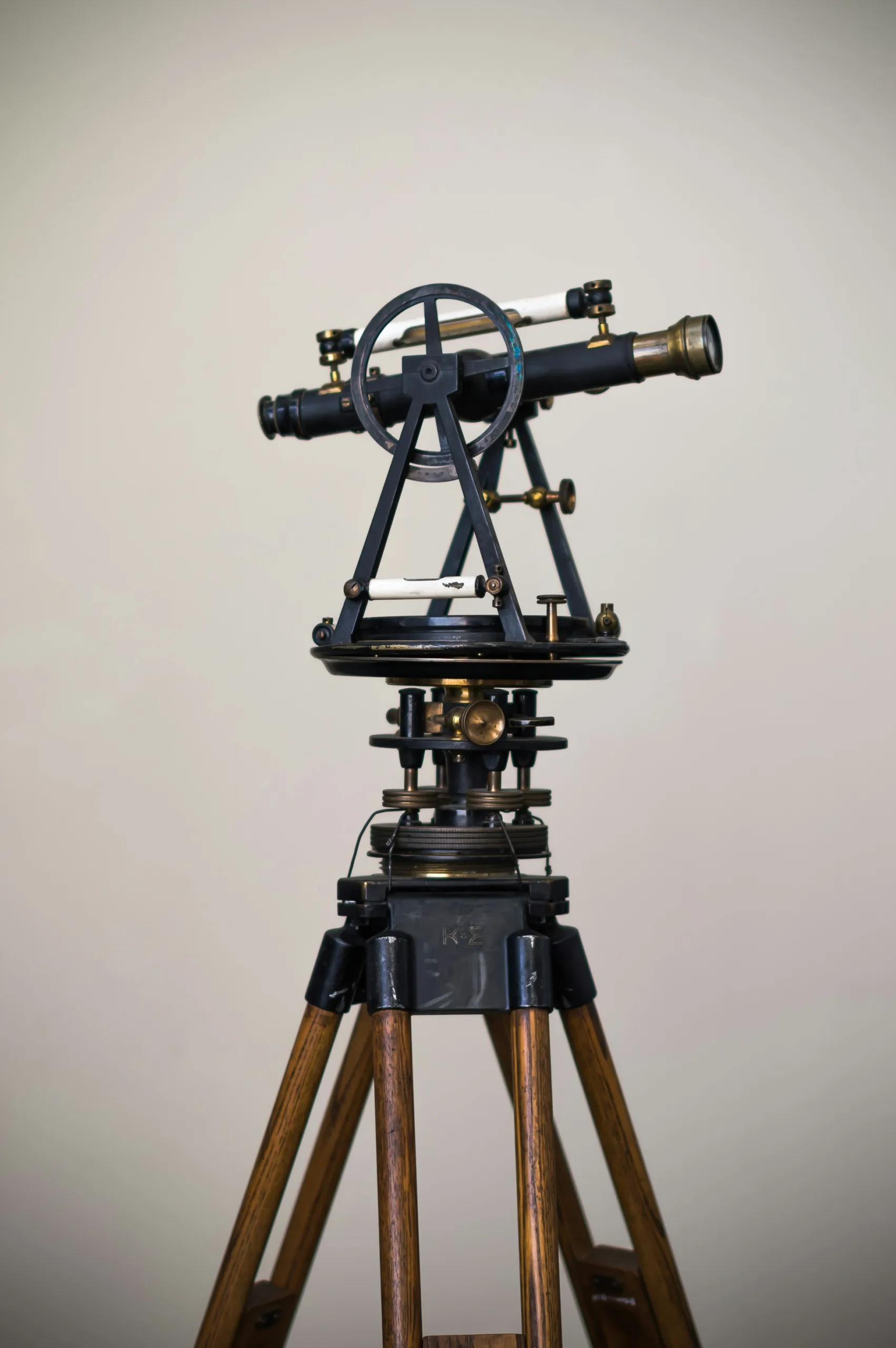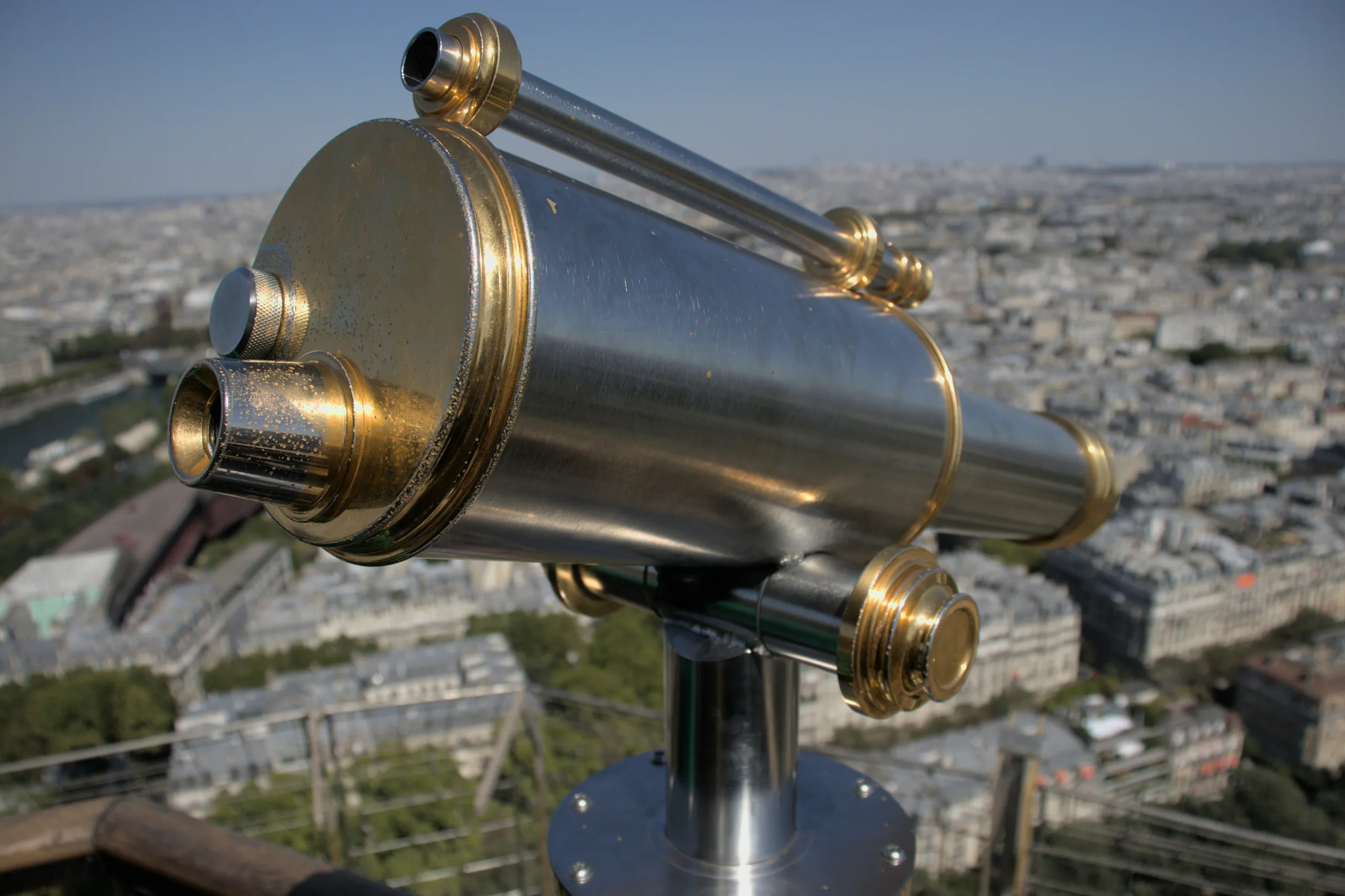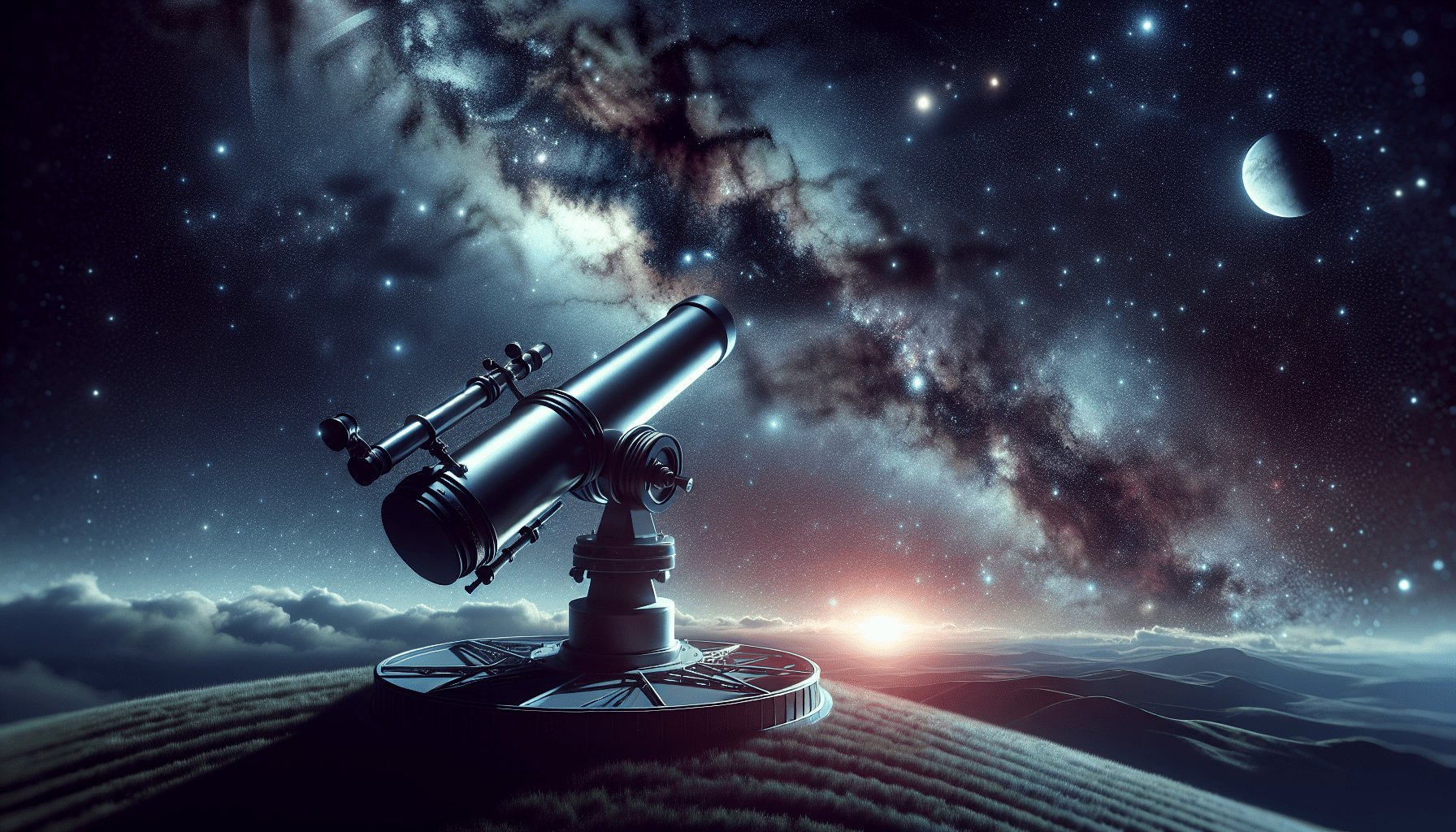“Exploring the Universe: Five Practical Uses for a Telescope” is a comprehensive article that highlights the multitude of ways in which a telescope can be utilized beyond its traditional hobbyist role. This engrossing read takes readers on a journey through five practical applications of telescopes, from aiding in scientific research and discovering exoplanets to assisting in astrophotography and deep space observations. With a keen eye for detail and a focus on practicality, this article will undoubtedly capture the imagination of readers eager to uncover the vast potential hidden within the realms of the universe.
Table of Contents
Astronomy
Astronomy is the study of celestial bodies and their behavior, allowing scientists to gain a deeper understanding of the universe. By observing, analyzing, and interpreting the vast array of celestial objects, astronomers are able to unlock the mysteries of the cosmos. This field of study encompasses various sub-disciplines, each with its own unique focus and research methods.
Exploring the Universe: Five Practical Uses for a Telescope

Studying celestial bodies
Studying celestial bodies is one of the fundamental aspects of astronomy. Telescopes play a crucial role in this pursuit, as they enable scientists to observe distant stars, galaxies, and other astronomical objects in great detail. Through careful analysis of these observations, astronomers can determine the composition, temperature, size, and distance of various celestial bodies. This knowledge provides valuable insights into the formation and evolution of the universe.
Exploring the solar system
The solar system holds countless opportunities for exploration and discovery. Telescopes allow scientists to closely observe and study the planets, moons, asteroids, and comets within our solar system. By capturing detailed images and collecting data, astronomers can investigate the geological features, atmospheric conditions, and other characteristics of these celestial objects. This information not only expands our knowledge of our own solar system but also provides vital insights into the formation and evolution of other planetary systems.
Observing distant galaxies
Beyond our solar system lie countless galaxies, each harboring billions or even trillions of stars. Through the use of telescopes, astronomers can observe these distant galaxies and investigate their properties. By analyzing the light emitted by these galaxies, scientists can determine their distance, size, and composition. This data allows for the exploration of cosmic phenomena such as black holes, supernovae, and the expansion of the universe. Through the study of distant galaxies, astronomers gain a deeper understanding of the vast scale and complexity of the cosmos.
Satellite Tracking
The increasing presence of satellites in our skies has led to the need for accurate monitoring and tracking systems. Telescopes equipped with specialized tracking mechanisms enable scientists to track the trajectory and behavior of satellites with precision and accuracy. By continuously monitoring their positions, astronomers can gather valuable data on satellite movements, orbital mechanics, and potential collision risks. This information is crucial for space agencies and satellite operators to ensure the safe operation and coordination of satellite networks.
Monitoring and tracking satellites
Satellite tracking involves regular monitoring of satellite positions through the use of telescopes. By precisely tracking their paths and movements, scientists can gather data on orbital mechanics, including altitude, speed, and inclination. This information allows for the prediction and avoidance of collisions with other satellites or space debris, ensuring the longevity and functionality of satellite systems.
Studying their behavior and trajectory
In addition to monitoring satellite positions, telescopes can be used to study the behavior and trajectory of these man-made objects. By analyzing the way satellites move and interact with their environment, scientists can gain insights into their operational characteristics and potential vulnerabilities. This knowledge is vital for improving satellite design, optimizing orbital maneuvers, and enhancing the overall efficiency and reliability of satellite systems.
Space Debris Detection
The accumulation of space debris poses a significant risk to both operational satellites and future space missions. With the growing number of defunct satellites, discarded rocket stages, and other debris in Earth’s orbit, the need for accurate detection and tracking systems has become paramount. Telescopes equipped with specialized sensors and detection algorithms can play a crucial role in identifying and tracking space debris, assessing potential hazards, and contributing to space debris mitigation efforts.
Identifying and tracking space debris
Telescopes equipped with sensitive sensors and modern imaging techniques can identify and track space debris with precision. By pinpointing the position and trajectory of individual debris objects, astronomers can provide valuable data to satellite operators and space agencies. This data enables accurate predictions of potential collision risks and facilitates the necessary maneuvers to avoid debris and protect operational satellites.

Assessing potential hazards
Space debris poses a significant hazard to both manned and unmanned space missions. Telescopes equipped with advanced detection capabilities can assess potential hazards by analyzing the size, composition, and trajectory of detected debris objects. This information allows space agencies to evaluate the risk of collision and make informed decisions for spacecraft operations, mission planning, and astronaut safety.
Contributing to space debris mitigation efforts
Efforts to mitigate the growing concern of space debris require accurate tracking and monitoring systems. Telescopes, with their ability to detect and track space debris, play a vital role in contributing to these mitigation efforts. By providing data on debris population, distribution, and behavior, astronomers can aid in the development of strategies to minimize the creation of new debris, as well as actively remove existing debris from Earth’s orbit.
Meteorology
Observing and understanding weather patterns is essential for numerous sectors, including agriculture, aviation, and disaster management. Telescopes, when combined with other atmospheric monitoring instruments, provide valuable data for meteorological research and forecasting. By monitoring atmospheric conditions, cloud formations, and other meteorological parameters, astronomers contribute to climate research and the accurate prediction of weather phenomena.
Observing and studying weather patterns
Telescopes, equipped with specialized instruments and filters, can observe various aspects of the atmosphere that are critical for understanding weather patterns. By studying the distribution of cloud formations, temperature gradients, and wind patterns at different altitudes, scientists can gather data to analyze and model weather systems. This information is crucial for meteorologists to accurately forecast weather conditions and issue timely warnings for severe weather events.

Monitoring atmospheric conditions for climate research
In addition to short-term weather forecasting, telescopes contribute to long-term climate research by monitoring atmospheric conditions. By analyzing the absorption and emission spectra of different atmospheric constituents, scientists can study the greenhouse effect, ozone depletion, and other factors impacting climate change. Telescopic observations play a critical role in understanding the complex interactions between the atmosphere, oceans, and land surfaces, leading to improved climate models and mitigation strategies.
Planetary Science
The study of planets within our solar system and beyond provides invaluable insights into the processes that shape these celestial bodies. Telescopes play a vital role in planetary science by allowing scientists to examine the surfaces of planets, identify geological features, and analyze their chemical composition. Through these observations, researchers gain a deeper understanding of the formation, evolution, and potential habitability of planets.
Examining the surfaces of planets
Telescopes equipped with high-resolution imaging capabilities allow scientists to examine the surfaces of planets in impressive detail. By capturing images across different wavelengths of light, astronomers can identify and study various geological features, such as impact craters, volcanic structures, and erosion patterns. These observations provide important clues about the geological history and surface processes that have shaped the planets in our solar system.
Identifying geological features
Telescopes equipped with spectroscopic capabilities enable scientists to identify specific geological features on planets. By analyzing the reflected or emitted light from a planet’s surface, astronomers can identify the presence of different minerals, gases, and other chemical compounds. This information aids in the characterization of planetary compositions and geological activity, helping to unravel the mysteries of the inner workings of planets.

Analyzing chemical composition
The analysis of a planet’s chemical composition is crucial for understanding its geological and atmospheric processes. Telescopes, when combined with spectroscopic instruments, can provide valuable data on the elements and compounds present on a planet’s surface and in its atmosphere. By accurately measuring the absorption and emission spectra of different molecules, scientists can deduce the atmospheric composition, study climate systems, and investigate the potential for habitability.
Astrophotography
Astrophotography combines the art of photography with the science of astronomy, allowing us to capture stunning images of celestial objects and record astronomical phenomena in detail. Telescopes equipped with advanced imaging technology and specialized cameras enable astronomers and photographers to capture the beauty and intricacy of the universe, while also contributing to scientific research.
Capturing images of celestial objects
Telescopes with advanced imaging capabilities and precise tracking systems enable the capture of detailed images of celestial objects. From capturing the intricate details of distant galaxies to revealing the magnificent formations on planetary surfaces, astrophotography employs longer exposure times and specialized techniques to bring to light the wonders of the universe. These images serve both artistic and scientific purposes, inspiring awe and providing valuable data for astronomical research.
Recording astronomical phenomena in detail
Astrophotography allows us to record and document various astronomical phenomena that occur within the cosmos. Through long-exposure imaging, astronomers can capture the movement of stars, the trails left by comets, and even the subtle changes in brightness exhibited by distant supernovae. By documenting these phenomena with telescopes, scientists can analyze the data to gain insights into stellar evolution, cosmic events, and the overall dynamics of the universe.
Navigation
Navigation has long relied on celestial bodies for positioning and orientation. Telescopes, with their ability to observe and track stars and other celestial objects, assist in navigation at sea or land, providing reliable reference points for determining one’s position and heading.

Assisting in navigation at sea or land
Telescopes have historically played a vital role in navigation, especially during maritime expeditions. Sailors and navigators rely on the accurate observation and identification of stars, planets, and other celestial bodies to determine their position and plot their course. By using telescopes to observe and track these reference points, seafarers can navigate vast distances and uncharted waters with greater precision and confidence.
Using stars and celestial bodies for positioning
Telescopes aid in navigation by enabling the observation and identification of stars and other celestial bodies. These fixed points in the night sky provide a reliable frame of reference for determining one’s location and direction. By precisely observing the positions of stars and comparing them to established celestial catalogs, navigators can calculate their latitude, longitude, and even the time of day. Telescopes enhance the accuracy and reliability of these measurements, enabling safe and efficient navigation.
Deep Space Communication
Deep space probes, such as those exploring distant planets or studying cosmic phenomena, require reliable communication with Earth. Telescopes play a vital role in facilitating this communication by transmitting data over vast distances, ensuring a constant flow of information between Earth and deep space probes.
Facilitating communication between Earth and deep space probes
Telescopes equipped with powerful transmitters and receivers serve as essential communication links between Earth and deep space probes. By transmitting and receiving signals, such as scientific data and commands, telescopes establish a reliable communication channel over immense distances. This enables Earth-based scientists and engineers to receive valuable data from deep space probes and send instructions to adjust their missions or collect additional information.
Transmitting data over vast distances
The vast distances between deep space probes and Earth present significant challenges for communication. Telescopes, with their ability to focus and amplify signals, help overcome these challenges by transmitting data over immense distances. Using highly specialized antennas and transmitters, telescopes ensure that the scientific data collected by deep space probes reaches Earth with minimal loss or degradation. This data serves as a valuable resource for scientific research, deepening our understanding of the universe and pushing the boundaries of exploration.
Astrobiology
Astrobiology seeks to answer one of the most profound questions in science – Are we alone in the universe? Telescopes play a crucial role in this field by searching for signs of life, analyzing exoplanets, and investigating the potential for extraterrestrial life.
Searching for signs of life in the universe
Telescopes equipped with advanced spectroscopic instruments allow scientists to search for signs of life beyond our planet. By analyzing the composition of exoplanetary atmospheres, astronomers can detect the presence of key molecules associated with biological activity, such as oxygen and methane. These observations provide valuable insights into the potential habitability of exoplanets and serve as indicators for the presence of life-sustaining conditions.
Analyzing exoplanets
Telescopes equipped with high-resolution imaging technology enable scientists to analyze exoplanets in detail. By observing the reflected light from these distant worlds, astronomers can study their size, composition, and even climate systems. This data helps to determine the habitability of exoplanets and provides crucial information for identifying potential targets for future exploration and the search for extraterrestrial life.
Investigating the potential for extraterrestrial life
Telescopes contribute to the investigation of the potential for extraterrestrial life by combining various observational techniques and data analysis methods. By studying the properties of exoplanets, their host stars, and the environments in which they exist, astronomers can assess the likelihood of habitability and even the presence of microbial life. Telescopes equipped with advanced instrumentation continue to push the boundaries of astrobiology, fueling our curiosity and expanding our understanding of the possibility of life beyond Earth.
Education and Outreach
Astronomy captivates the human imagination and inspires wonder about the vastness and beauty of the universe. Telescopes, with their ability to reveal the hidden wonders of the cosmos, play a crucial role in inspiring interest in astronomy, engaging students in scientific research, and sharing discoveries with the public.
Inspiring interest in astronomy
Telescopes provide a window into the universe, allowing people of all ages to witness its wonders and develop an interest in astronomy. Through public observation nights, planetarium shows, and educational campaigns, telescopes offer opportunities for individuals to gaze at celestial objects and engage with the mysteries of the cosmos. By sparking curiosity and wonder, telescopes inspire the next generation of astronomers and scientists, fostering a lifelong passion for the exploration of the universe.
Engaging students in scientific research
Telescopes provide valuable opportunities for students to engage in scientific research and contribute to our understanding of the cosmos. By participating in observing programs and data analysis projects, students can actively participate in scientific inquiry, learning about various astronomical phenomena and developing critical thinking skills. These experiences not only deepen their understanding of the universe but also nurture a sense of curiosity, creativity, and appreciation for the scientific process.
Sharing discoveries with the public
Telescopes act as powerful tools for sharing discoveries and scientific advancements with the public. Astronomical observatories and research institutions often organize public lectures, exhibitions, and outreach events that showcase the latest findings in astronomy. By sharing images, videos, and explanations of celestial objects and phenomena, telescopes enable the public to appreciate the beauty of the universe and grasp the vastness and complexity of the cosmos. This engagement fosters a sense of wonder, ignites scientific curiosity, and promotes a wider understanding and appreciation of our place in the universe.
In conclusion, telescopes play a crucial role in various fields of study and exploration. From enabling us to study celestial bodies and explore the solar system to tracking satellites, detecting space debris, and observing weather patterns, telescopes provide valuable data and insights that contribute to our understanding of the universe. They facilitate communication with deep space probes, search for signs of extraterrestrial life, and inspire the next generation of scientists through education and outreach. As technology continues to advance, telescopes will continue to push the boundaries of knowledge, unraveling the mysteries of the cosmos and sparking our curiosity about the universe we inhabit.
Related site – The Five Big Ways the James Webb Telescope Will Help Astronomers Understand the Universe
